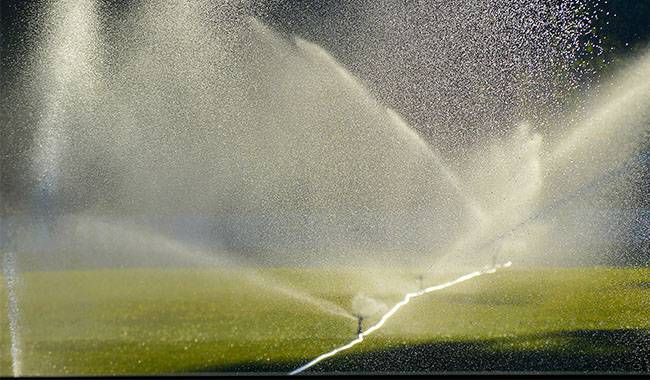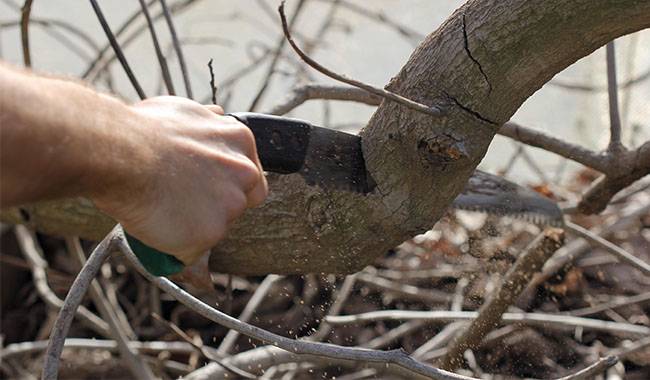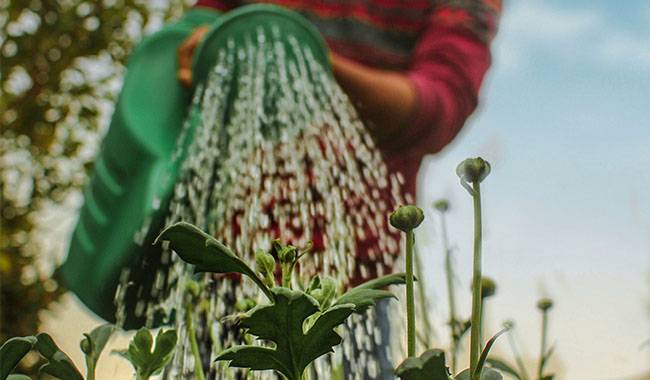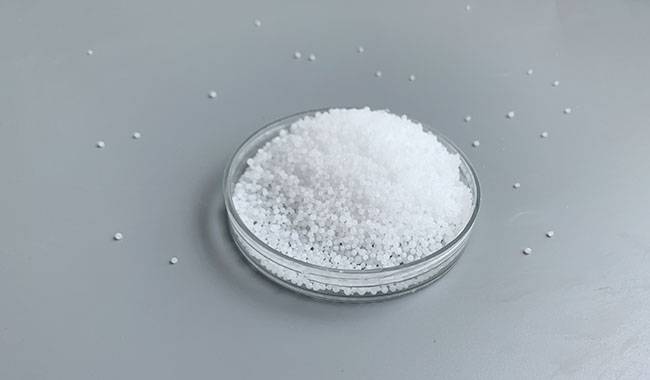
Everyone knows that oxygen, hydrogen, carbon, and nitrogen are necessary for the existence of living organisms. Obviously, nitrogen is one of the main elements in the life of plants, humans, and animals. For plants, the source of nitrogen is the soil.
Depending on the type of soil and how it is “worn”, the amount of nitrogen in it is different. Most nitrogen deficiencies are felt by a variety of crops grown on sandy loam soils.
It is these types of soils that always require additional nitrogen fertilizer to make the plants feel good.
THE NITROGEN CONTENT OF THE SOIL
It has been found that the largest percentage of nitrogen in the soil is concentrated in its layer called humus, which has more than 5% of nitrogen. Naturally, the thicker the humus layer, the more nitrogen it contains, and therefore, plants feel better in this soil.
Humus is a very stable substance that breaks down very slowly, so it does not extract minerals from this layer too quickly. Of the 5% of humus found in the soil, only 1% is water-soluble mineral compounds, which means it is edible for plants.
Therefore, even in the presence of a thick layer of humus. Nutrients are needed although in lower doses.
WHY DO PLANTS NEED NITROGEN?
It turns out that not every organic compound contains this element. For example, nitrogen is not found in sugars, fibers, oils, and starches. Nitrogen is found in amino acids and proteins. Nitrogen is an essential component of nucleic acids, literally the most important component of any cell, responsible for protein synthesis and the replication of genetic data (replication is the formation of additional genetic material identical to that already in the genome).
Even chlorophyll, which is known to help plants absorb solar energy, has nitrogen in its composition. In addition, nitrogen is also found in various components of the organic environment, such as alkaloids, lipids, and similar substances.
All above-ground plant matter has nitrogen, and most of this element is present in the very first leaf flakes. With the end of the flowering period and the beginning of ovary formation, this substance is transferred to the reproductive organs of the plant, where it accumulates and forms proteins.
During seed maturation, nitrogen is taken up from the plant organs in the largest quantities and they are strongly consumed. If the soil contains a large amount of nitrogen and the plant consumes a lot of it, then this element is distributed to practically all organs of the plant, leading to the rapid growth of the above-ground parts, delayed ripening of berries and fruits, and a reduction of the total plant yield.
Only a balanced nitrogen concentration in the soil can guarantee high yields and adequate product quality.
Plants that consume enough N rather than too much thrive and produce typical, usually green, standard leaves; if not, they wilt and produce mediocre harvests.
TYPES OF NITROGEN-CONTAINING FERTILIZERS
Nitrogen fertilizers are substances that contain nitrogen compounds. There are several major categories of nitrogen fertilizers. These are nitrate fertilizers (calcium nitrate and sodium nitrate), ammonium fertilizers (ammonium chloride and ammonium sulfate), ammonium nitrate fertilizers (ammonium nitrate), amide fertilizers (urea), and liquid nitrogen fertilizers (ammonia or anhydrous ammonia).
Nitrogen fertilizer, nitrate type
Let’s start with calcium nitrate – its chemical formula is Ca(NO₃)₂. Externally, calcium nitrate is a snow-white granule with a nitrogen content of up to 18%. It is suitable for highly acidic soils. The properties of calcium nitrate will be improved by systematic annual application in highly acidic soils. Calcium nitrate is extremely soluble in water, so the fertilizer should be stored in impermeable bags.
When applying calcium nitrate, remember not to mix it with phosphate fertilizer.
The next type of fertilizer is sodium nitrate formulated as NaNO₃. This fertilizer is in crystalline form and contains slightly less nitrogen, up to 17%. Sodium nitrate is highly soluble in water and is well absorbed by the roots of plants. This fertilizer is versatile and can be applied to many different crops. It cannot be applied in the fall: the nitrogen it contains is actively washed into the groundwater.
Due to its great water solubility and hygroscopic properties, this fertilizer must be stored in a dry place.
Ammonium fertilizers
The next group is ammonium fertilizers. At the top of this group is ammonium sulfate, which has a chemical formula similar to (NH4)2SO4. Visually, this fertilizer is a snow-white powder that contains slightly more than 20% nitrogen.
Ammonium sulfate can be used both as a primary nitrogen fertilizer and as a supplemental fertilizer. Application of this fertilizer can be done in the fall: the nitrogen is fixed in the soil and is not washed into the groundwater.
The planned annual application of ammonium sulfate to the soil will acidify the soil, for which the fertilizer must be mixed with lime or chalk in a ratio of one to two.
Ammonium sulfate is not hygroscopic, so its storage is usually not a problem. It is important to remember that making this fertilizer cannot be combined with any alkaline fertilizer because of the risk of inhibiting the activity of nitrogen.
Ammonium chloride, – its chemical formula is NH₄ Cl. This fertilizer contains about 26% nitrogen. Visually, ammonium chloride is a yellowish-white powder. When making ammonium chloride it is not washed away by the soil, and when storing this fertilizer it does not clump and does not need to be ground even after years of storage. The nitrogen released from the ammonium chloride in the soil is completely absorbed by the plants.
The main disadvantage of this fertilizer is that it contains chlorine. For example, when you apply 10 kg of active ingredient nitrogen to the soil, about twice as much chlorine enters the soil, and it is considered toxic to most plants. With this in mind, ammonium chloride must be applied in the fall in order to deactivate the chlorine component, but up to 2% of the nitrogen will be lost with it.
Ammonium nitrate fertilizer
The next category is ammonium nitrate fertilizer and the leader of this category is ammonium nitrate. Ammonium nitrate has the following chemical formula – NH₄NO₃. This fertilizer has the appearance of a white granular powder. This fertilizer contains about 36% of nitrogen. Ammonium nitrate can be used as a basic fertilizer or as additional fertilizer.
This fertilizer is classified as a sphere-free substance, so its main use is in areas where water is scarce. It is worth noting that the effectiveness of this fertilizer is minimized on soils with too much water, because the nitrogen contained in the fertilizer, is almost completely washed into the groundwater.
Since ammonium nitrate is highly hygroscopic, it should not be stored in a humid room, as it will rapidly harden and clump. Of course, this does not mean that this fertilizer is useless, but it is necessary to crush the ammonium nitrate before making it into the soil, which is sometimes quite difficult.
If you intend to make a mixture of ammonium nitrate and phosphate fertilizer, such as calcium superphosphate, then initially you should mix the calcium superphosphate with any neutralizing fertilizer, such as dolomite powder, chalk, or lime, and the next step is to mix it with the ammonium nitrate.
Do not forget that the planned annual application of ammonium nitrate to the soil will result in an increase in its acidity. It is important to note that the increase in soil acidity levels is most active over time, while in the initial stages of application, changes in acidity are difficult to detect.
To prevent soil acidification, ammonium nitrate should be applied with chalk, dolomite powder, and lime in a ratio of 1 to 2.
Interestingly, pure ammonium nitrate is hardly sold at present but is sold as various mixtures. A mixture consisting of 60% ammonium nitrate and 40% of various neutralizing ingredients is very popular and has a good reference value. At this ratio, the mixture contains about 19-21% nitrogen.
Amide fertilizers
Urea, -whose chemical formula is in the form of CH4N2O. Urea is also known as urea and this fertilizer is considered to be one of the most effective fertilizers. In urea contains about 47% of nitrogen and sometimes -1% of nitrogen. The outer surface is snow-white granules. This fertilizer has an increased ability to acidify the soil, so it can only be applied together with neutralizers – dolomite powder, chalk, and lime. Urea is rarely used as the main fertilizer and is usually used as additional foliar fertilizer. It is also a good foliar fertilizer because it does not burn the leaf layer, but is well absorbed by the plant.
There are two known brands of urea named A and B. Grade A is not in the high-efficiency category and is rarely used in crop production. Typically, grade A urea is used as a feed additive for animals, such as goats, cows, and horses. grade B urea is urea that has been treated with additives and is used exclusively as a fertilizer.
Liquid nitrogen fertilizer
Ammonia, or ammonium hydroxide (ammonia or liquid ammonia). The chemical formula for ammonium hydroxide is NH4OH. in fact, ammonia water itself represents ammonia dissolved in water. There are two types of liquid ammonia, the first containing at least 19% and no more than 26% nitrogen, and the second can contain between 15% and 21% nitrogen. Usually, ammonia is made by a special device capable of embedding this fertilizer in the ground to a depth of about 5.5-6inch (14-15 cm).
The advantages of liquid fertilizers are their extremely low price, rapid digestion by plants, long duration of action, and even distribution of the fertilizer in the soil. There are also disadvantages – transportation and storage are quite difficult, there can be strong burns when the fertilizer touches the surface of the leaves, and special equipment designed for applying liquid fertilizers is required.
Organic nitrogen fertilizers
As you know, nitrogen is found in organic compounds, but in very small quantities. For example, in cattle manure, no more than 2.6% of nitrogen is present. In poultry manure, which is quite toxic, it is as high as 2.7%. Nitrogen is also present in compost, but the amount of nitrogen varies greatly, depending on the “composition” of the compost.
Compost made from lake mud, fallen leaves, green lumps of weeds, and bog peat provided the most nitrogen. Organic compost is not recommended as a basic fertilizer because of its unstable nitrogen content, which can cause nutrient deficiencies and nitrogen deficiencies in plants. In addition, this type of fertilizer, although slow, can still acidify the soil.
CULTIVATION IN WHICH NITROGEN IS PARTICULARLY IMPORTANT
In general, every crop needs nitrogen, but certain crops have different application rates. With this in mind, all plants can be grouped together according to their nitrogen needs.
Category 1: You can include those plants that need a nitrogen fertilizer applied prior to planting to activate their growth and development. For these crops, approximately 26-28 grams of nitrogen per square meter is required in terms of ammonium nitrate and area per square meter. These crops include vegetable crops: potatoes, cabbage, bell peppers, eggplant, zucchini, squash, and rhubarb; berry and fruit crops: plums, cherries, raspberries, blackberries, and strawberries; flower crops: lilacs, roses, dahlias, peonies, violets, crocuses, bittersweet, lilacs, goldenrod, and violet.
Category 2: are crops that require less nitrogen. Usually, only 18-19 grams of nitrogen per square meter of the area is sufficient in terms of ammonium nitrate. Vegetable crops may include tomatoes, parsnips, cucumbers, carrots, corn, beets, and garlic; fruit and berry crops: apple trees, currants, gooseberries; flower crops: all annuals and trilliums.
Category 3: are plants that require moderate amounts of nitrogen, not exceeding 10-12 grams per square meter in terms of ammonium nitrate. From vegetables, this category can include: early potatoes, salad crops, radishes, and onions; from fruit crops are pears; from flowering crops: bulbs, primroses, manzanitas, stonecrop, and chrysanthemums.
The last category requires a minimum amount of nitrogen per square meter, in terms of ammonium nitrate, not exceeding 5-6 grams. From vegetable crops, spicy herbs and legumes can be included here; from flowering crops: poppies, rhododendrons, hollyhocks, heathers, eggplants, maidenhair, borderline, rhododendrons, and cosmos.
RULES FOR USING NITROGEN FERTILIZERS
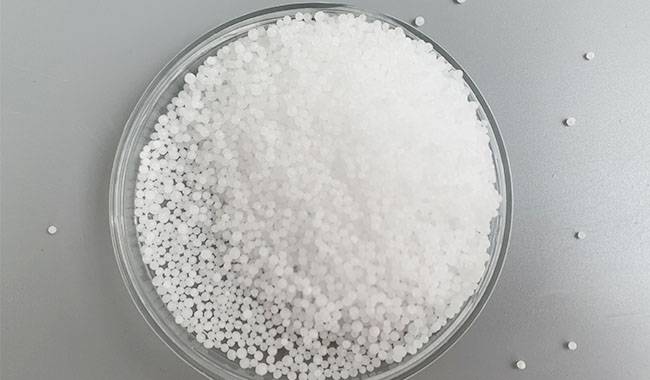
Remember that only the optimal dose of nitrogen fertilizer can positively affect the growth and development of various plants. You should know how to calculate the nitrogen content of fertilizers and apply them correctly for different soil types, seasons, and plants.
For example, if you apply nitrogen in the fall, there is a risk that it will be washed into the groundwater. Therefore, spring is the most appropriate time to apply nitrogen fertilizer.
If you want to fertilize more acidic soils, you must mix nitrogen with various neutralizers such as chalk, lime, or dolomite. This way, the fertilizer will be better absorbed and the soil will not become acidic.
For the inhabitants of grassland areas and forest grasslands, where the soil is mostly dry, it is very important to apply nitrogen fertilizer regularly and not to interrupt it suddenly, otherwise, the growth, development, and yield of plants will be affected.
Nitrogen fertilizer in black calcium soils is best applied 11-12 days after snowfall. The first fertilizers are best-used urea, and when the plants enter the active vegetative phase – introduce ammonium nitrate.
CONSEQUENCES OF NITROGEN DEFICIENCY
We have already partly touched on this point, but nitrogen deficiency manifests itself in more than just inhibition of growth. Very often, the leaves on the plant also begin to turn yellow, which is the first sign of fertilization. In the case of severe nitrogen deficiency, in addition to the yellowing of the leaves, the tips of the leaves slowly begin to dry out.
CAN NITROGEN FERTILIZATION CAUSE DAMAGE?
Yes, if there is too much nitrogen, it can. Usually, if too much nitrogen, the above-ground flora starts to develop too vigorously. The shoots become thicker, the leaf plates increase in size and the internodes become larger. The green mass gets atypically luxuriant and soft, and the flowering is either weak and short or not at all so that no ovary is formed and no fruits and berries are formed.
If there is too much nitrogen, something like scorch marks appears on the leaves, which then die and fall off before their time. The death of the leaves sometimes leads to the death of parts of the root system, which is why nitrogen should be applied in strict ratios.
So, as you can see, all plants need nitrogen fertilizer, but you have to determine the correct dosage and apply it at the recommended time. Among other things, according to the properties of the fertilizer itself.




